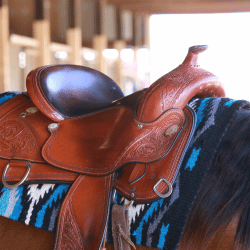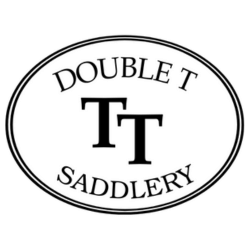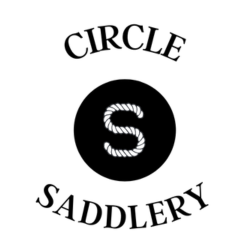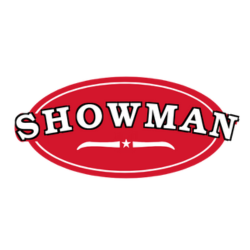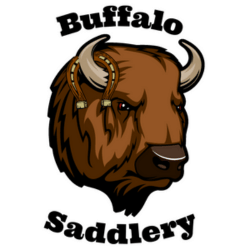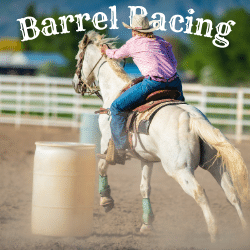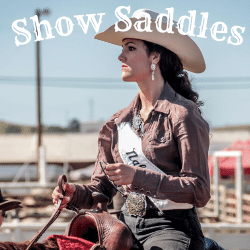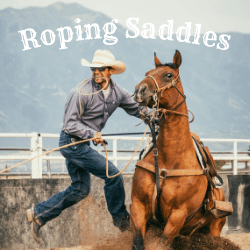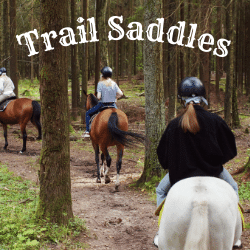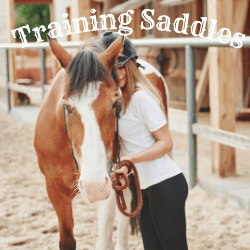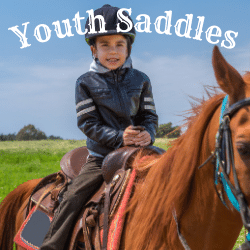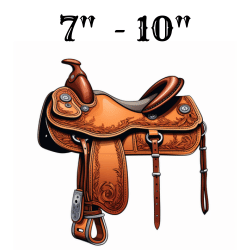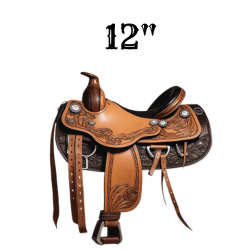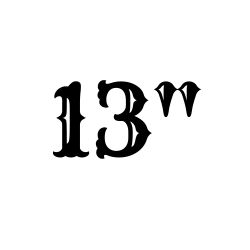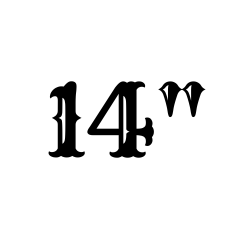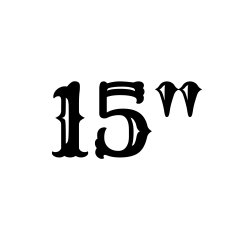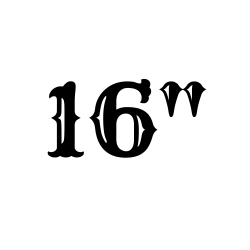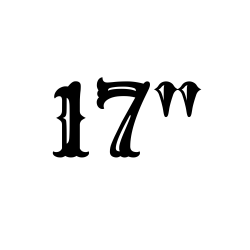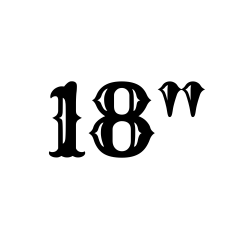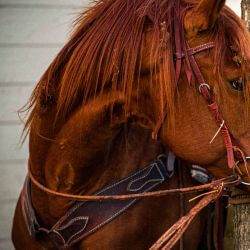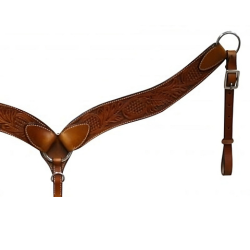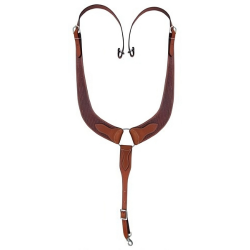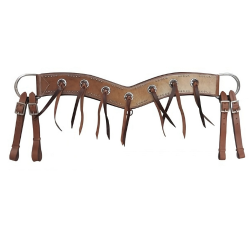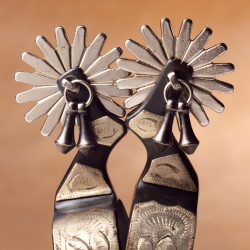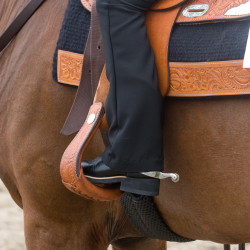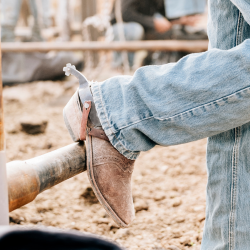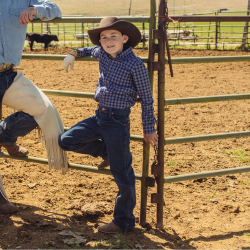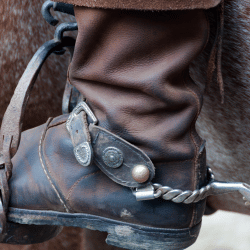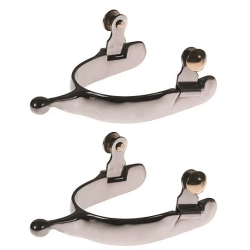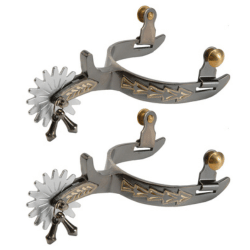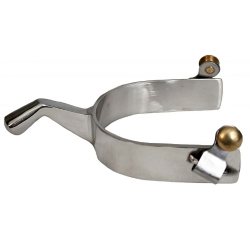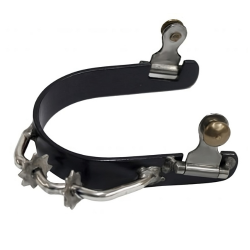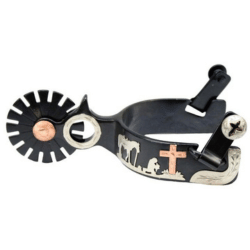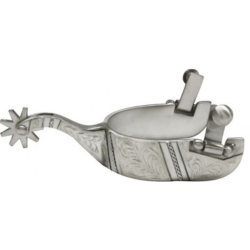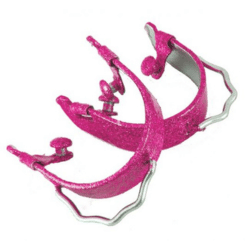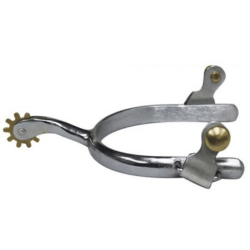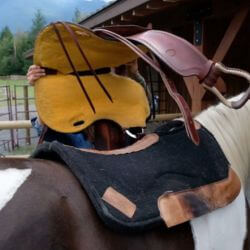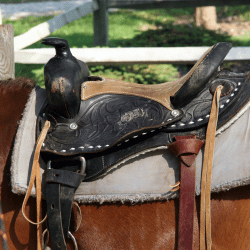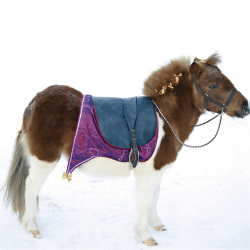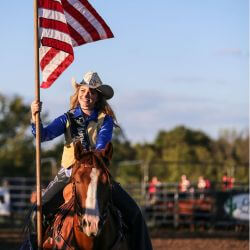When it comes to caring for our horses, ensuring their comfort is of utmost importance. And one area where comfort plays a crucial role is in choosing the right breast collar. A properly fitting and comfortable breast collar not only enhances your horse's performance but also prevents discomfort and potential injuries. But with so many options available in the market, how do you choose the best one for your horse?
In this blog post, we will delve into the world of breast collars and guide you through the process of selecting the perfect one for your horse's comfort. We'll start by understanding the different types of breast collars, such as pulling collars, tripping collars, roping collars, and pleasure riding collars. Each type serves a specific purpose, and understanding their differences will help you make an informed decision.
Next, we'll discuss how to measure your horse for a breast collar. Knowing where and how to measure, as well as ensuring a proper fit, is essential for your horse's comfort and safety. We'll provide step-by-step instructions to help you accurately measure your horse and choose the right size.
Material plays a significant role in the comfort and durability of a breast collar. We'll explore various materials such as leather, nylon, neoprene, and biothane, discussing their pros and cons. By understanding the characteristics of each material, you can make an informed decision that suits your horse's specific needs.
Finally, we'll cover the essential maintenance and care tips for your horse's breast collar. Regular cleaning, inspection, and proper conditioning for leather collars are crucial to ensure longevity and continued comfort for your horse. We'll also discuss the importance of replacing worn-out parts and how it contributes to your horse's overall well-being.
Choosing the best breast collar for your horse's comfort is a decision that should not be taken lightly. By following the guidelines and tips in this blog post, you'll be equipped with the knowledge to make an informed choice. Stay tuned as we dive deep into the world of breast collars and help you prioritize your horse's comfort.
Understanding the Basics: Why a Comfortable Breast Collar is Important for Your Horse
A comfortable breast collar is not just a luxury for your horse, but a necessity for their overall well-being and performance. Let's explore why a comfortable breast collar is crucial and how it can benefit your horse:
1. Distributes Pressure and Weight
A well-fitted breast collar helps distribute pressure and weight evenly across your horse's chest and shoulders. During activities such as pulling, tripping, roping, or pleasure riding, the breast collar acts as a support system, preventing excessive strain on specific areas. This balanced distribution reduces the risk of muscle fatigue, soreness, and potential injuries.
2. Prevents Slippage
A properly adjusted breast collar helps keep the saddle in place, preventing it from sliding backward during riding or working sessions. This stability is particularly important for activities that involve sudden movements or changes in speed. By preventing slippage, a comfortable breast collar ensures that your horse maintains proper balance and reduces the chances of accidents or discomfort.
3. Enhances Performance
When your horse feels comfortable and unrestricted, their mobility and performance improve significantly. A well-fitted breast collar allows your horse to move freely without any restrictions or discomfort. This freedom of movement translates into better performance, whether it's pulling a heavy load, navigating obstacles, or simply enjoying a leisurely ride.
4. Reduces Chafing and Rubbing
Ill-fitting or uncomfortable breast collars can cause chafing and rubbing against your horse's skin. This can lead to painful sores, skin irritation, and even open wounds. A comfortable breast collar, made from the right material and properly adjusted, minimizes the risk of chafing and rubbing, ensuring your horse's skin remains healthy and free from any discomfort.
5. Builds Trust and Bond
Comfort plays a crucial role in building trust and a strong bond between you and your horse. When your horse feels comfortable wearing a breast collar, they associate it with positive experiences. This positive association fosters trust, making your horse more willing to cooperate and work with you. It enhances the overall riding or working experience, leading to a stronger partnership and mutual understanding.
Understanding the importance of a comfortable breast collar is the first step in ensuring your horse's comfort and well-being. By prioritizing their comfort, you not only enhance their performance but also contribute to their overall happiness and health. Now that we have established the significance of a comfortable breast collar, let's explore the different types available in the market and how they cater to specific needs and activities.
Understanding Different Types of Breast Collars
When it comes to breast collars, there are several different types available, each designed to serve a specific purpose and cater to different activities. Understanding the different types will help you choose the right breast collar for your horse's specific needs. Let's explore the various types of breast collars:
1. Pulling Collars
Pulling collars are primarily used for activities that involve pulling heavy loads, such as draft work or pulling a carriage. These collars are typically made of sturdy materials like leather or nylon and feature a wide and padded shoulder strap. The wide strap helps distribute the weight evenly across the shoulders, reducing strain and pressure on the horse's neck and chest. Pulling collars often have a shaped arch that allows freedom of movement for the horse's windpipe, preventing breathing restrictions.
2. Tripping Collars
Tripping collars are specifically designed for activities like roping or tripping cattle. They are usually made of heavy-duty leather and feature a wide and contoured chest strap. The contoured shape allows the collar to sit snugly around the horse's chest, providing stability and preventing slippage during quick movements. Tripping collars also have a steep arch to protect the windpipe and allow freedom of movement for the horse's head.
3. Roping Collars
Roping collars are similar to tripping collars and are commonly used in rodeo events or working with cattle. They are made of durable materials like leather or nylon and feature a wide and stiff chest strap. The stiff strap helps keep the horse's shoulders aligned and provides support when roping or handling livestock. Roping collars often have a deep curve in the front to protect the windpipe and alleviate pressure on the horse's neck.
4. Pleasure Riding Collars
Pleasure riding collars, also known as breastplates, are designed for recreational riding and general use. They are available in various styles and materials, including leather, nylon, or neoprene. Pleasure riding collars typically consist of a chest strap that connects to the saddle's girth or billet straps, creating a secure and stable fit. While pleasure riding collars may not provide as much specialized support as other types, they still play a role in preventing saddle slippage and improving overall balance and comfort.
Understanding the different types of breast collars allows you to choose the one that best suits your horse's specific needs and activities. Whether you're engaged in heavy-duty work, rodeo events, or simply enjoying leisurely rides, selecting the right type of breast collar ensures your horse's comfort, performance, and well-being. Now that we have explored the different types of breast collars, let's move on to the next crucial step: measuring your horse for a perfect fit.
How to Measure Your Horse for a Breast Collar
Ensuring a proper fit is essential when it comes to choosing a breast collar for your horse. Proper measurement is the key to finding the right size that will provide optimal comfort and support. Follow these steps to accurately measure your horse for a breast collar:
1. Where to Measure
Start by identifying the areas where you need to measure your horse. The two main points to focus on are:
a. Chest Circumference
Measure the circumference of your horse's chest, just behind the front legs, where the breast collar will sit. Use a flexible measuring tape and make sure it is snug but not too tight. This measurement will determine the size of the breast collar you'll need.
b. Shoulder Width
Measure the width of your horse's shoulders by placing the measuring tape from the top of one shoulder blade to the top of the other. This measurement will help you ensure that the breast collar is wide enough to sit comfortably on your horse's shoulders without causing any restrictions.
2. What Measurements to Take
Once you know where to measure, it's time to take the actual measurements. Here are the specific measurements you need:
a. Chest Circumference
Wrap the measuring tape snugly around your horse's chest, just behind the front legs. Note down the measurement in inches or centimeters.
b. Shoulder Width
Measure the distance from the top of one shoulder blade to the top of the other. Again, note down the measurement in inches or centimeters.
3. How to Ensure a Proper Fit
Now that you have the measurements, it's important to ensure a proper fit for your horse's comfort. Consider the following factors:
a. Adjustability
Check if the breast collar you're considering has adjustable straps or buckles. This allows for a more customized fit, accommodating variations in your horse's body shape.
b. Snug but Not Tight
When fitting the breast collar, make sure it is snug but not overly tight. It should fit comfortably without restricting your horse's movement or causing discomfort.
c. Freedom of Movement
Ensure that the breast collar allows your horse's shoulders to move freely. It should not impede their natural range of motion.
d. Two-Finger Rule
Use the "two-finger rule" to check the fit. You should be able to slide two fingers comfortably between the breast collar and your horse's chest. This ensures enough space for comfort and prevents any rubbing or chafing.
By taking accurate measurements and considering these fitting factors, you can choose a breast collar that fits your horse perfectly, providing the necessary support and comfort for their activities. With the proper fit in mind, let's move on to the next important aspect: choosing the best material for your horse's breast collar.
Choosing the Best Material for your Horse's Breast Collar
The material of the breast collar plays a significant role in its durability, comfort, and overall performance. Different materials offer various benefits and considerations. Here are some common materials used for horse breast collars:
1. Leather
Leather is a classic and popular choice for breast collars. It is known for its durability, strength, and aesthetic appeal. Leather breast collars are often made from high-quality cowhide or harness leather. They provide excellent support and are resistant to stretching. Additionally, leather breast collars tend to mold to the horse's body over time, offering a customized fit. However, leather requires regular cleaning and conditioning to maintain its quality and prevent drying out or cracking.
2. Nylon
Nylon breast collars are lightweight, durable, and easy to clean. They are an affordable option and come in various colors and styles. Nylon is resistant to water, making it suitable for use in wet conditions. However, nylon may not provide as much breathability as other materials, and it can be prone to stretching over time. Nonetheless, nylon breast collars are a practical choice for everyday riding or working purposes.
3. Neoprene
Neoprene breast collars are known for their excellent padding and shock-absorbing properties. They provide superior comfort and help prevent rubbing or chafing. Neoprene is also resistant to water, making it suitable for all-weather conditions. However, neoprene may not be as durable as leather or nylon and can wear out over time with extensive use. Regular cleaning and proper maintenance are essential to keep neoprene breast collars in good condition.
4. Biothane
Biothane breast collars are gaining popularity due to their durability and low maintenance requirements. Biothane is a synthetic material that closely resembles leather but offers the benefits of being waterproof, easy to clean, and resistant to fading or cracking. It is also available in a variety of colors and styles. Biothane breast collars are an excellent choice for those looking for a combination of durability and low maintenance.
Consider the specific needs of your horse, the intended use of the breast collar, and your personal preferences when choosing the material. Each material has its advantages and considerations, so weigh them against your requirements to make an informed decision. Now that we've explored the different materials, let's move on to the next section, which covers maintenance and care for your horse's breast collar.
Maintenance and Care for Your Horse's Breast Collar
Proper maintenance and care are essential to ensure the longevity and functionality of your horse's breast collar. Regular cleaning, inspection, and appropriate care measures will not only keep the breast collar in good condition but also contribute to your horse's comfort and safety. Here are some important maintenance and care tips to follow:
1. Regular Cleaning and Inspection
Clean your horse's breast collar regularly to remove dirt, sweat, and debris. Use a soft brush or damp cloth to gently wipe away any buildup. Pay attention to areas where dirt may accumulate, such as buckles, stitching, and padding. Regularly inspect the breast collar for any signs of wear, loose stitching, or damage that may compromise its integrity.
2. Applying Conditioner for Leather Collars
If you have a leather breast collar, it is crucial to condition it to keep the leather supple and prevent drying out or cracking. Apply a leather conditioner or oil specifically designed for equestrian gear. Follow the manufacturer's instructions and apply the conditioner evenly, focusing on the areas that are prone to drying, such as the straps and buckles. Conditioning should be done periodically or as needed, depending on the frequency of use and environmental conditions.
3. Replacing Worn Out Parts
Regularly check the hardware, buckles, and connectors on your horse's breast collar for signs of wear or damage. If you notice any loose stitching, broken buckles, or worn-out parts, it is important to replace them promptly. Worn-out or damaged parts can compromise the functionality and safety of the breast collar. Replace them with high-quality hardware or consult a professional if you are unsure about the replacement process.
4. Proper Storage
When not in use, store your horse's breast collar in a clean and dry area. Avoid exposure to direct sunlight or extreme temperature conditions, as they can cause the material to deteriorate. If possible, hang the breast collar or store it flat to maintain its shape and prevent unnecessary bending or creasing.
5. Regular Check-ups
Make it a habit to regularly check the fit and condition of your horse's breast collar. As horses change shape or gain/lose weight, adjustments may be needed to ensure a proper fit. Additionally, check for any signs of discomfort or irritation on your horse's chest while using the breast collar. If you notice any issues, consult with a professional or consider trying a different style or material that may better suit your horse's needs.
By following these maintenance and care tips, you can ensure that your horse's breast collar remains in excellent condition and provides optimal comfort and support. Regular cleaning, inspection, and appropriate care measures will contribute to your horse's overall well-being and extend the lifespan of the breast collar.

